Types of pseudo-erantemum and its cultivation

Pseudorantemum is a massive ornamental plant with a spectacular appearance. The culture is demanding to care for, which is why novice florists rarely decide to start it. To help this article, which describes the types of plants, the intricacies of home care, breeding methods and pests.


Description
The pseudo-erantemum came to the windowsills of apartments from the tropics, therefore it is distinguished by its special thermophilicity. It belongs to the genus of flowering plants of the Acanthus family. The genus includes more than a hundred species that are widespread throughout the tropical regions.
Among the representatives of the pseudo-erantemum there are perennial herbs, dwarf shrubs and shrubs. Depending on the species, the height of adult crops ranges from 30 cm to 1.5 m.
The shrubs bloom annually. Their inflorescences are spike-shaped, the flowers are most often lilac, pink or milky with a bright red core, and the petals are decorated with small blotches of different tones.
The plant blooms actively in natural conditions, but when growing at home, it is almost impossible to achieve flowering even if all the requirements for the content are met.
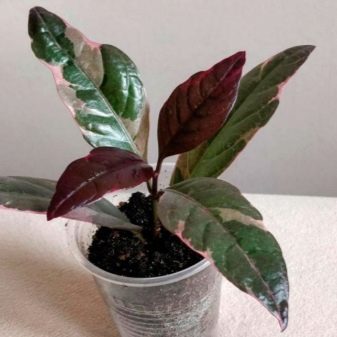
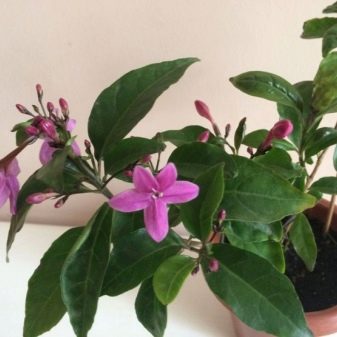
Views
In the wild, there are several dozen varieties of pseudo-erantemum. However, only 4 types are suitable for apartment conditions.
- Carruthers. He's a crimson pseudo-erantemum. It is a Polynesian shrub that is most common among flower growers. An adult culture can reach 1 meter. The shrub is massive, with huge leaves 15-17 cm long and 10 cm wide. The effectiveness of carruthers is given not only by the size of the leaf plates, but also by their unusual color, usually tricolor. Pointed variegated ovoid leaves of bright green shades are strewn with spots of asymmetric shapes. Their colors are pale pink, yellow, bright red or white. The flowers of the plant are white with purple spots on the petals.
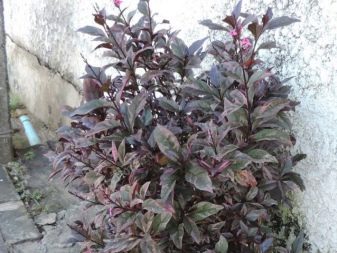

- Reticulate. This species is somewhat more compact compared to its crimson counterpart. The maximum height of the shrub is no more than 0.5 m. The length of the leaf plates reaches 13-15 cm, their edges are wavy, the surface is glossy, and the shape is elongated-oval. The foliage is bright green, it is riddled with thin yellow lines.
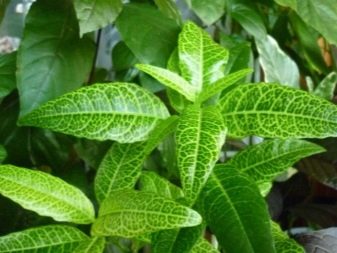

- Laxiflorum. It is considered the most attractive type of pseudo-erantemum. The length of an adult shrub reaches 1 meter. The surface of the ovoid leaves is green, shiny, and the flowers have a delicate purple color.
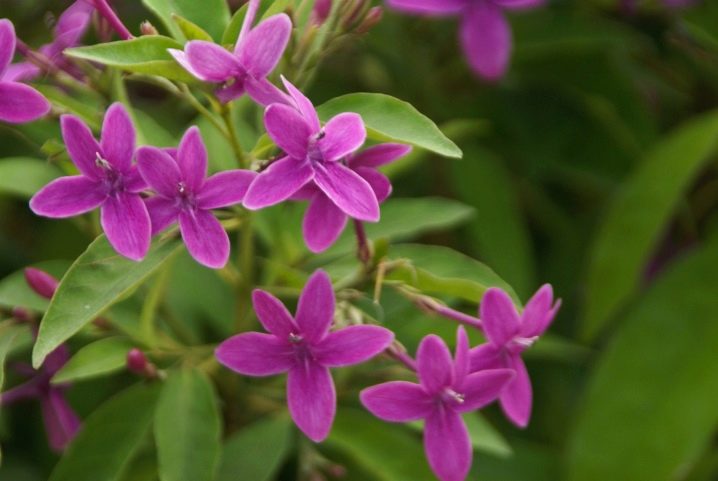
- Lumpy. This is a low-growing houseplant, the length of which rarely exceeds 50 cm.The shrub has thin horizontally located stems. The leaves of the tuberous pseudo-erantemum are small, oval, they are located opposite. The edge of the foliage is wavy. Under natural conditions, the shrub blooms almost all year round. Its flowers are large and white.
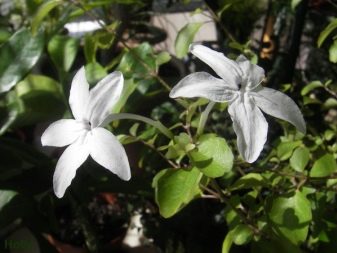
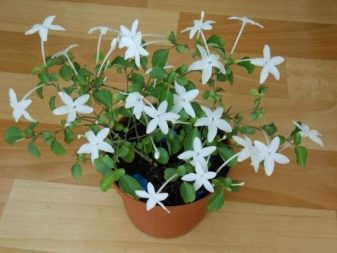
The types of pseudo-erantemum differ externally, but at the same time they are equally demanding in terms of content.
Home care
The pseudo-eranthemum is capricious and very demanding on the conditions of detention. Even small oversights in the care of a flower can lead to a stop in its growth, stuntedness and death.
Light
For tropical shrubs, it is important to receive a lot of sunlight throughout the year. In this case, the light should be diffused. The direct rays of the sun on the green mass of the plant must be excluded, otherwise burns may appear on the foliage. With a direct hit of ultraviolet light on the leaf plates, patterns are destroyed over time, due to which the flower will lose its effectiveness.
For the location of the flower, window sills located in the west or east are optimal. You can place the shrub pot on the south side, but away from the glass. To reduce the risk of burns, it is recommended to install a diffuser screen on the windows.
In winter, you need to provide a good level of lighting. For this, flower growers use special equipment - phytolamps. An important condition is that the level of lighting in winter should be exactly the same as in summer. The plant will react to a higher amount of light by stopping development and changing the color of the foliage.
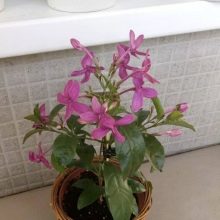
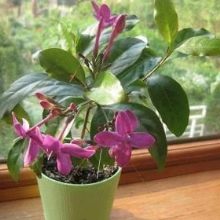

Temperature
The heat-loving pseudo-erantemum will not tolerate temperatures below 15 degrees or sudden temperature changes. Plants are comfortable in the heat, but a critical lowering of the column on the thermometer is destructive for them.
The optimum room temperature is 22-25 degrees. The stability of the thermometer readings is important, despite the season of the year. Shrubs do not tolerate drafts and intense heat exposure (for example, when placing a pot near heating appliances).
Florists are advised to exclude airing the room, since even with the slightest draft, the bush can throw off the foliage.
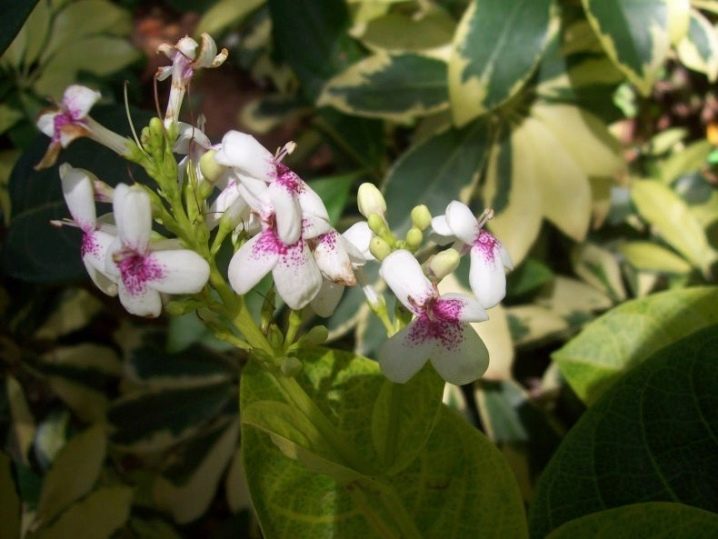
Watering
For a moisture-loving pseudo-erantemum, abundant and regular watering is important, but at the same time, due to excessive moisture, the roots of the bush can rot. You need to water the flower when the top layer of the soil dries out (about 2 cm deep).
The frequency of humidification should be approximately the same, which is easy to maintain while maintaining a constant room temperature. Liquid should not be allowed to stagnate. Waterlogging of the soil along with low temperatures lead to rot of leaf plates, shoots and root systems.
Overdrying the soil is no less dangerous for the pseudo-erantemum. With a lack of moisture, the plant will shed some of the foliage, in the worst case, the shrub will dry out completely and die.
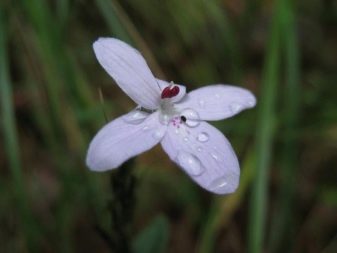

Top dressing
Regular application of fertilizers to the pseudo-erantemum is not required. Top dressing is applied once in spring or summer, and it is not recommended to fertilize the shrub in winter and spring.
Ready-made mineral supplements can be used as nutrients. They must have a high volume of potassium. Lack of this element leads to pallor of foliage, loss of decorativeness.
It is better to refuse the use of mineral sets with a high nitrogen content, since platinum sheets also become less bright and spectacular from an excess of nitrogen.
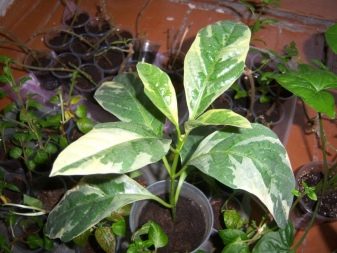

Pruning
Pseudorantemum grows very actively (about 20 cm in height per year), its stems stretch out and become bare over time, which is why the bush loses its attractiveness. To preserve the spectacular appearance of the plant, it must be trimmed in time and a lush crown formed by pinching young branches and trimming old long stems.
Pruning is painless for pseudo-erantemum, however, it is not recommended to resort to it if the plant is stretched out too much. With excessive lengthening of the bush and the loss of its decorative effect, pruning will not help. In this case, the right decision is flower rejuvenation. For cuttings, old shoots are suitable, which, after rooting, replace the plant.
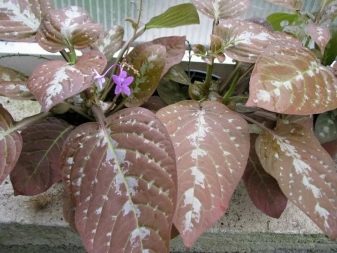

Transfer
Pseudorantemum is a fast growing plant, so an annual transplant is a necessary procedure. The transfer pot should be about 1.5 times larger than the previous one. It is recommended to carry out this procedure in the spring. Particular attention should be paid to the quality of the soil and its characteristics:
- pH - neutral;
- the use of drainage (stones, expanded clay) is mandatory;
- the earth should not be dense, so you can add vermiculite, perlite in a ratio of 1 to 10;
- it is advisable to disinfect the soil before transplanting, for example, frying.
When choosing a pot for transshipment of a pseudo-erantemum, you should pay attention to a sufficient number of drainage holes.
Important! When transplanted, this plant tolerates interventions and pruning well. Therefore, if the roots have grown strongly, then they can be safely cut off.
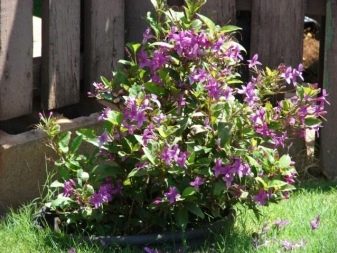

Diseases and pests
Most of the problems with growing a pseudo-erantemum are associated with violations of the rules of care. The plant is very sensitive to external factors. Here is a list of common problems and how to solve them.
- Leaves are falling. The soil is dry, the plant lacks moisture. It is necessary to adjust the watering regime.
- The leaves dry at the ends. In the room where the pseudo-erantemum grows, the humidity is too low. It is necessary to spray the leaves from a spray bottle at least once a day or put a humidifier in the room.
- The ends dry, brown and brown spots appear on the leaves. Too high light intensity is not the norm. The appearance of spots is leaf burns. It is necessary to rearrange the plant to another place, organize a bright, but diffused light.
- The leaves turn yellow completely and then fall off. Most likely, the flower is flooded. Over-watering can cause rot on the roots, leading to the death of the flower. To avoid this scenario, you need to establish proper care. In some advanced cases, only a transplant can help. The roots affected by rot are cut off, treated with a fungicide and transferred to a new pot with light soil.
The most common parasites for pseudo-erantemum are scale insects, spider mites, whiteflies, and felt insects. In order not to miss the infection, you need to regularly inspect the leaves of the flower. If a whitish bloom appears in the form of small dots or felt, sticky droplets on the leaves or barely noticeable cobwebs, you need to urgently take action. Lost time in the fight against parasites is fraught with the death of the plant.

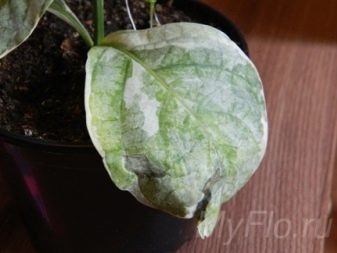
How to propagate?
Pseudorantemum, including variegated, is propagated by seeds and cuttings. The first method is practically not used, due to the fact that it is very difficult to achieve flowering and collect seeds at home.
Plant cuttings are carried out as follows:
- the shoots are cut in the spring, leaving 2-3 buds with leaves;
- the shoot is cut into the soil, deepening it by 3-4 cm;
- the pot with the handle is covered with a foil - this creates ideal conditions for the rapid formation of roots and the development of the plant.

Some growers do not plant the stalk in the ground right away, but allow the roots to form in a container with water. The only requirement is that the water must always be at room temperature (not lower than 25 ° C).
Pseudorantemum is a capricious, but incredibly spectacular plant that, with proper care, will delight its owner with the beauty of the leaves, and possibly also with delicate flowering.








































































































The comment was sent successfully.